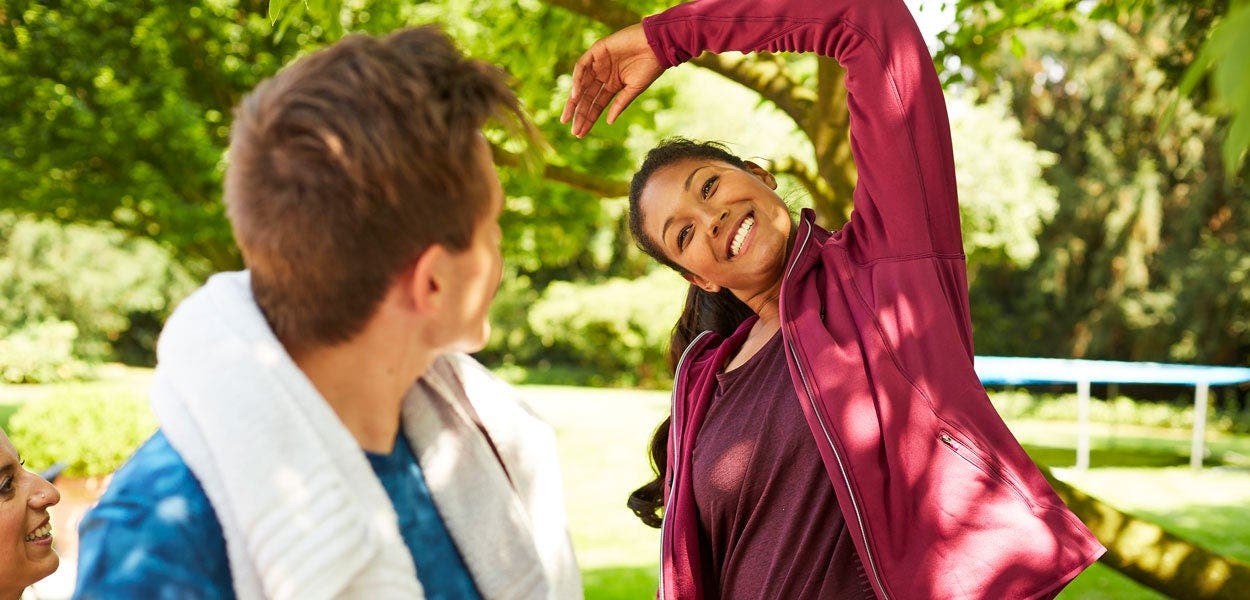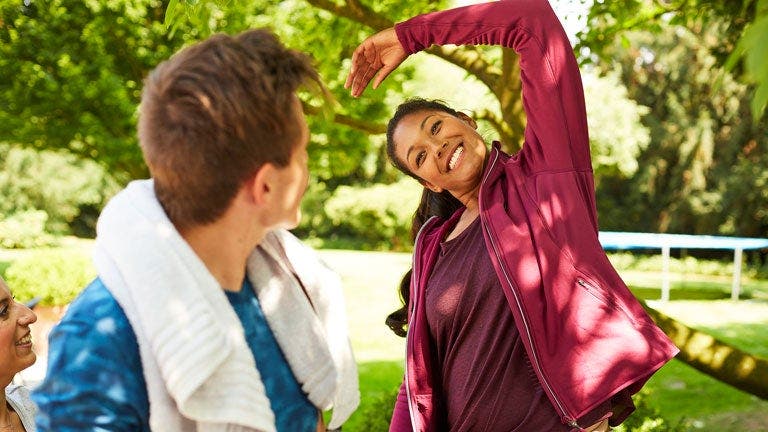Yes, It's Possible to Find Workout Clothes You Feel Good In


Weather conditions aside, sometimes it would be easier if we could exercise in the nude. Too-tight (or too-loose!) clothing can chafe; sweat can cause baggy t-shirts to bunch uncomfortably; drawstrings can get caught in weight machines at the gym.
"If you’re embarrassed by your clothes for any reason — if they’re dated, worn out, revealing, frumpy or inappropriate — there’s a slim chance you’ll make it to the gym or any public place to exercise," says Adventure Boot Camp Master Trainer Kelli Calabrese.
Ultimately, says Calabrese, "you need clothing that will keep you comfortable, keep your body cool, fit properly, and provide support." Easier said than done? Not if you follow our perfect-fit solutions below. Whatever your clothing-related workout problem is, we've got the answer.
Problem: "Fitted gym clothes don’t look good on me."
Solution: Try on several brands and outfits until you find what looks best on you. When your clothes are too big, you're adding bulk – which can get in the way of your confidence and your range of motion. To look your best, make sure clothing is the right size (not gear from 20 lbs ago).
Stand in front of the mirror in gym clothes and perform a few bicep curls, leg lifts and standing abdominal crunches. Can you see the movements of your upper body, your abs, and your quads? You should. If your gear is loose enough that you can't see your muscle movements, neither can your instructor or trainer, says A Big Attitude clothing designer Cynthia Tivers.
An instructor needs to see how your body moves in order to help you improve your form for better results and reduced injury risk, explains Exercise TV Pilates Instructor Nicole Stewart. Wear camis or tank tops for maximum shoulder visibility. Fitted long and short leave t-shirts are the next best option. You may feel self-conscious ditching oversized clothing, but it’s important to remember that everyone's more focused on their own workout, says Calabrese.
Problem: "My sweats get caught in machines."
Solution: Steer clear of drawstrings, flare legs, and other excess fabric. Drawstrings can get caught in weight stacks, cables, or in the moving arms of machines. Or if you’re using a fit ball, medicine ball, or even a foam roller, the strings can wrap around them and inhibit movement. Not to mention, if they happen to come untied, that’s another distraction you don’t need. Stewart tells her clients not wear boot cut pants on Pilates reformers. They often plunge below your bare feet and tend to get caught in the machines. This can also happen on exercise bikes and ellipticals. Instead, choose semi-fitted capris; Stewart recommends the Champion brand because they're affordable and well-made — and they come in sizes XS to 2XL.
Problem: "I don't like clothing sticking to my body during and after a workout."
Solution: Choose gear in breathable fabrics. Natural, breathable materials like cotton — and some synthetic materials made specifically for exercising — wick sweat away from your skin so it can evaporate quickly. The lightweight breathability of the material also keeps you from overheating by allowing air to circulate. You can tell if you’re wearing a non-breathable fabric if the heat you're creating from your workout is staying within your clothing. Clothing features such as meshing can also help regulate your temperature during a workout.
Problem: "My inner thighs tend to chafe 10 to 15 minutes into workouts."
Solution: Choose tagless tops and bottoms with flat seams. The goal here is to minimize friction and potential irritation, so you should also watch for fabric pilling; clothing that’s old or worn-out can rub against slightly sweaty skin, causing an uncomfortable rash. The proper fit can also protect against chafing — too-loose clothing can rub against skin as you move.
RELATED: Organize Your Closet for Success
